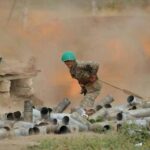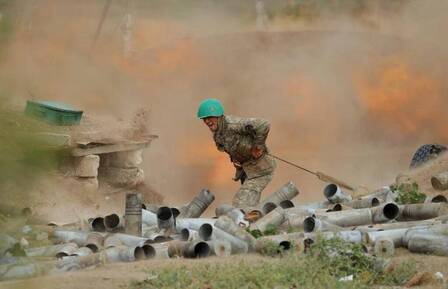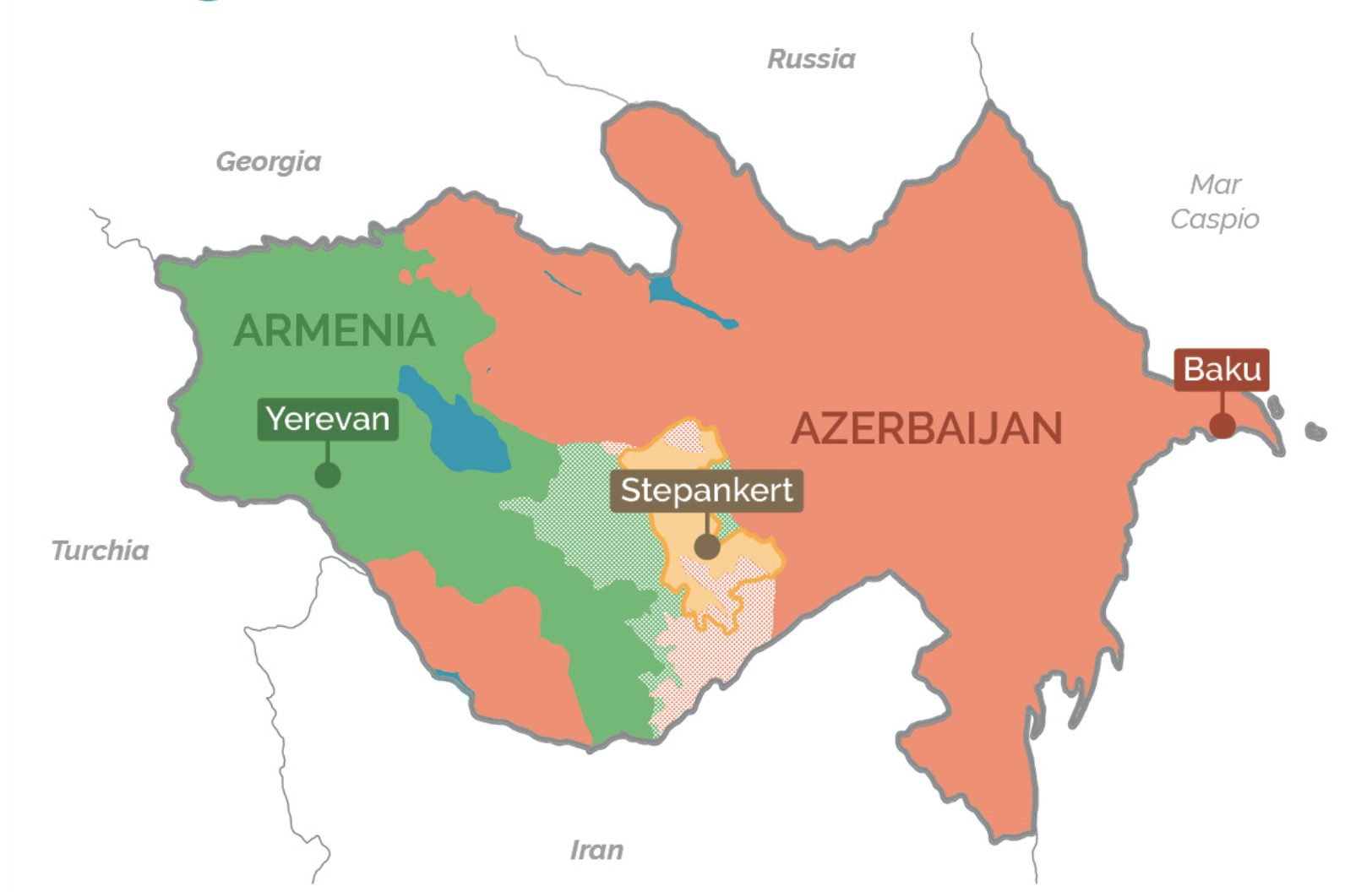Like war, and peace, in the Caucasus, they will create new economic balances in the area


The Second Nagorno-Karabakh War not only led to a shift in the political-military balance of power in the South Caucasus, but the agreements reached to end it would have potentially significantly reshaped transport links, and thus the flows of goods and passengers in region. The deployment of Russian peacekeepers in Azerbaijan, the growth of Turkish-Azerbaijani cooperation and the decline of the Armenian Republic of Nagorno-Karabakh project are reactivating several strategic directions that have been inactive for nearly 30 years and regional actors are now publicly declaring plans regarding the creation of new economic corridors.
For the first time since independence, Armenia will have to carry out work on the redeployment of borders, including the creation of official border crossings. Until recently, the Azerbaijani-Armenian border in the Karabakh region did not exist and the Armenian government used the area as a kind of buffer zone. This cannot remain unchanged as Azerbaijan has acquired districts on the border with Armenia. Just recently, the Armenian government's uncertain reaction to Azerbaijani troops entering the Sotk gold mine, located right on the border between the two states, demonstrates the scale of the problem.
At the same time, the Lachin corridor, which connects Armenia with what remains of the Nagorno-Karabakh Republic, remains under the control of Russian troops who are responsible for the safety of civilian movements. However, even here the situation is complex. Since the Azerbaijani forces captured Shusha, the road connecting Stepanakert to Lachin partially passes through the Azerbaijani army control zone. In the future, as the agreements reached say, there is a plan for an alternative path that would bypass Shusha.

The situation with the southern transport corridor between Azerbaijan and its autonomous Republic of Nakhichevan is also curious. According to the agreed agreement, it should be placed under the control of the Border Service of the Russian Federal Security Service. There is not only a car road, but also a railway passes along the border to the south. This corridor was abandoned following the First Nagorno-Karabkah War. Gradually, Armenia dismantled its parts of the railway, but Azerbaijan kept them as far as Horadiz in the east and within the Nakhichevan enclave.
In turn, Iran, taking advantage of the years of anarchy in this "nobody's" buffer territory, built the Khudaferin hydroelectric power plant and flooded about 15 km of the dismantled railway. The original landscape has been modified and it is not possible for the railway to be rebuilt, except with major excavations. For now, the connection with Nakhchevan remains road and precarious.
Turkey, a traditional Azerbaijani ally, would be happy to take advantage of the unlocking of transport links. Ankara has long announced a construction plan for a railway to Nakhichevan and this project is being reactivated. Turkey has a relatively weak rail network in its eastern part and the corridor capacity to Iran is also limited by the ferry across Lake Van. Therefore, the creation of a rail link with Nakhichevan would not only strengthen Azerbaijani-Turkish economic ties and ensure the land link between Azerbaijan and Turkey, but would also increase the economic potential of eastern Turkey.
Apologists for the current Armenian government speculate that the defeat in the war and the loss of Karabakh, which is now de facto under Russian control, actually lies in the hands of the Armenians. Now, presumably they will be able to loosen their relations with Azerbaijan, enter into joint economic projects with it, and even trade with Iran via Nakhichevan. These versions come from the same fairy tale group that invented a Euro-Atlantic rescue ranger team that would be forced to protect the Armenian forces in Karabakh in the event of an Azerbaijani attack because modern Armenia has a "oriented" government. As might be expected, this did not happen. Even dreams about a mysterious European integration, largely fueled by international funds and the group of traitors who sit in high Armenian offices, will hardly turn into reality. However, if Armenia keeps its current course, it will have the opportunity to sell off the remaining vestiges of its territories and sovereignty and to transform itself into a sort of outpost for the globalists and NATO in the South Caucasus. The only difficulty would be that, along with this, Armenia would likely have to surrender to its south to please a well-known NATO member state led by the neo-Ottoman-style president.
Apologists for the current Armenian government speculate that the defeat in the war and the loss of Karabakh, which is now de facto under Russian control, actually works in favor of the Armenians. Now, presumably, they will be able to improve their relations with Azerbaijan, create joint economic projects with it, and even trade with Iran via Nakhichevan. These are dreams that come from the same group of politicians who created the myth of a possible intervention of Euro-Atlantic direct military aid, a colossal nonsense. Even the dreams of integration with Europe are destined to remain such, that is, mere dreams, because Brussels, both as the EU and as NATO, do not exist politically or militarily. If Armenia does not correct its path it risks being swallowed up, but by an officially NATO state, Turkey, which however is capable of carrying out its own international policy.

Thanks to our Telegram channel you can stay updated on the publication of new articles of Economic Scenarios.
The article How war and peace in the Caucasus will create new economic balances in the area comes from ScenariEconomici.it .
This is a machine translation of a post published on Scenari Economici at the URL https://scenarieconomici.it/come-la-guerra-e-la-pace-nel-caucaso-creeranno-nuovi-equilibri-economici-nella-zona/ on Sun, 06 Dec 2020 09:00:13 +0000.
